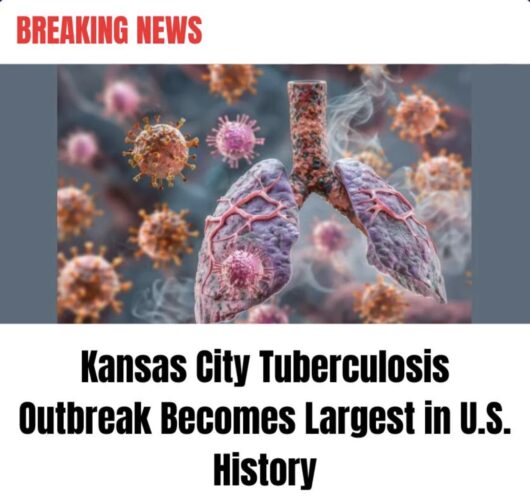 In January 2024, Kansas reported an alarming surge in tuberculosis (TB) cases, marking the beginning of what has become the largest documented TB outbreak in United States history since the 1950s. By January, 2025, the Kansas Department of Health and Environment (KDHE) confirmed 67 active TB cases and 79 latent TB infections, primarily concentrated in Wyandotte and Johnson counties within the Kansas City metro area. The outbreak resulted in two fatalities in 2024.
In January 2024, Kansas reported an alarming surge in tuberculosis (TB) cases, marking the beginning of what has become the largest documented TB outbreak in United States history since the 1950s. By January, 2025, the Kansas Department of Health and Environment (KDHE) confirmed 67 active TB cases and 79 latent TB infections, primarily concentrated in Wyandotte and Johnson counties within the Kansas City metro area. The outbreak resulted in two fatalities in 2024.
Outside of the United States, TB is even more common, especially afflicting nations of southern Africa and southern Asia. Unlike the U.S. where TB is mainly an infection of adults, TB in low-income countries most commonly targets children. The historical perspective is also important: In the 1600s–1800s, TB was responsible for 25% of deaths in Europe and the United States.
Tuberculosis is a bacterial infection that primarily affects the lungs, but can invade other parts of the body. TB spreads through the air when an infected person coughs, sneezes, or speaks. Active TB infection causes symptoms like persistent cough, chest pain, coughing up blood, fever, night sweats, and unexplained weight loss.
The greatest broad risk factor for TB infection, both then and now, is poverty. Low-income people often live in crowded conditions, where contagious transmission is easy. They may have a nutrition that weakenstheir bodily response to infection, and because they have little means to pay for care or transportation, their access to disease screening and treatment is very often impaired.
How can TB be controlled? We can see this in action right now throughout Kansas. Individuals who may have been exposed to TB need testing, follow up, and appropriate treatment. This is especially important for uninsured individuals for whom such care would otherwise be unavailable. Those people being treated for TB need careful follow up throughout the 6-9 month of therapy, especially because there is a tendency to stop taking the medication and then later suffered even worse drug-resistant tuberculosis infection.
How Can You Help?
What action can take action against tuberculosis, against one of the greatest killers in human history? Consider these possibilities:
- Are you interested in research? Our world urgently needs new TB rapid diagnostic test, new treatment regimens for drug-resistant TB, and perhaps most importantly, better vaccines to prevent TB among high-risk populations, like children and those with HIV infection. INMED’s Epidemiology Course gives a solid introduction to applicable research methods.
- Do you wish to provide healthcare for people suffering from TB? The INMED Graduate Certificate in International Health covers the details of tuberculosis medical care, and INMED International Service-Learning Sites in twenty-five nations can provide you with supervised clinical experience caring for such patients.
- Would you benefit from meeting others who share your concern for controlling TB? Join us in Kansas City on Thu-Fri, May 29-30, for the 20th annual Humanitarian Health Conference. At this event, join hands with like-minded colleagues, classmates, and organizations committed to eliminating the epidemic of TB and other diseases that affect vulnerable populations from Kenya to Kansas.
